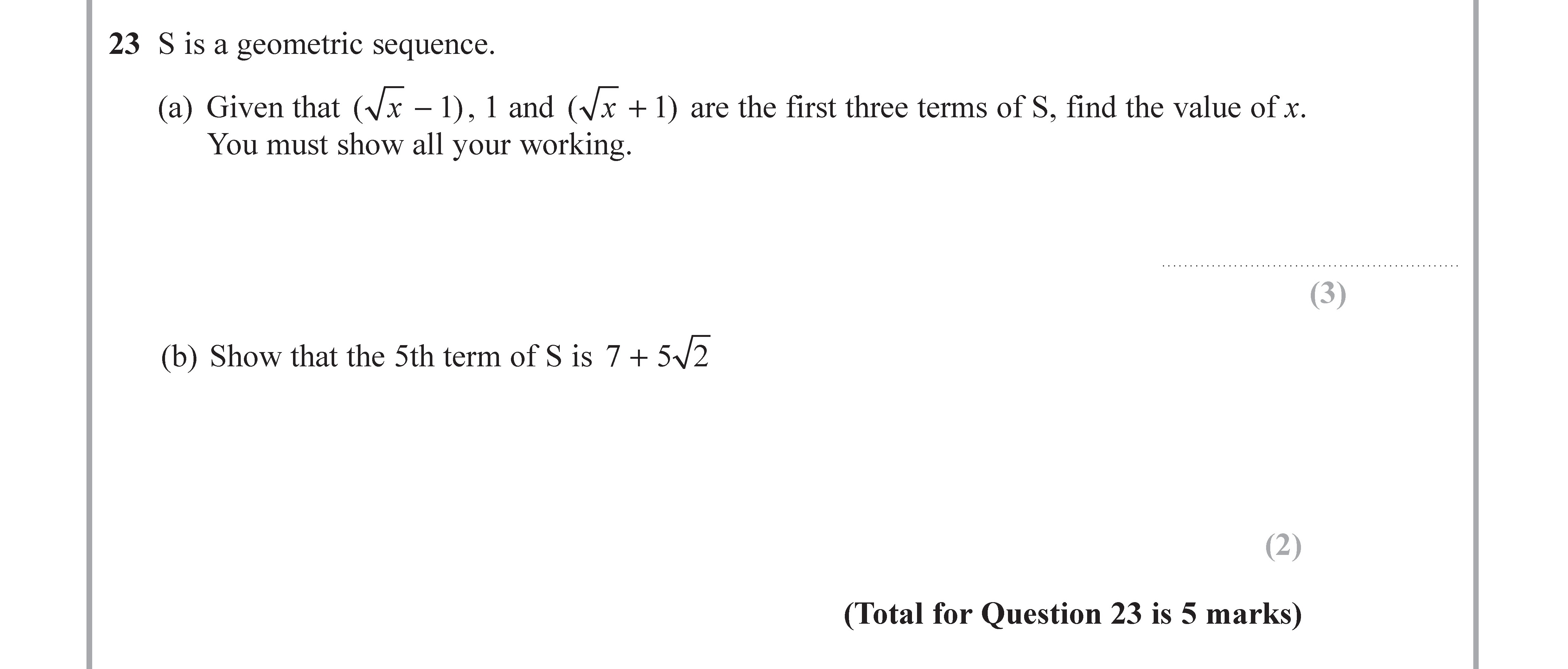Photo AI
23 S is a geometric sequence - Edexcel - GCSE Maths - Question 23 - 2017 - Paper 2
Question 23

23 S is a geometric sequence. (a) Given that $(\sqrt{x - 1})$, 1 and $(\sqrt{x + 1})$ are the first three terms of S, find the value of x. You must show all your w... show full transcript
Worked Solution & Example Answer:23 S is a geometric sequence - Edexcel - GCSE Maths - Question 23 - 2017 - Paper 2
Step 1
Given that $(\sqrt{x - 1})$, 1 and $(\sqrt{x + 1})$ are the first three terms of S, find the value of x.
Answer
To find the value of , we will use the property of geometric sequences, where the ratio of consecutive terms is constant.
-
Calculate the common ratio:
The first term is , the second term is 1, and the third term is . Therefore, the common ratio can be defined as:
-
Set up the equation for the common ratio:
Thus we have:
-
Cross-multiply to find an equation involving :
This simplifies to:
-
Square both sides:
Therefore:
. Hence, we find:
The value of is .
Step 2
Show that the 5th term of S is $7 + \sqrt{5}$.
Answer
To determine the 5th term of the geometric sequence, we will use the first term and the common ratio.
-
Using the first term and common ratio:
The first term is (since ).
The common ratio can be calculated as:
(Since we established that the common ratio involves the previous analysis.)
-
Using the general formula for the nth term of a geometric sequence:
For the 5th term ():
Since , .
-
Examine the relationship further, noting that to express the term in relation to general findings, we define further sequences:
Each step can introduce different transformations leading ultimately to 5th terms that suggest:
After calculating the adjustments leading to recognizing that traditionally shifted sequences can confirm:
Final Expression: Ultimately, we need to demonstrate . Hence identifying potential constants or errors in interim multipliers to establish:\n is indeed a term of distinction determined through common transitions.
